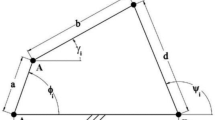Abstract
This paper describes a Generative Assembly Process Planner (GAPP) used to generate and evaluate assembly sequence alternatives which can be used in simultaneous engineering applications. Given a graph model of the product to be assembled, optimal assembly sequences are automatically generated and evaluated in a single process. Geometric feasibility and accessibility constraints on assembly operations which help prune the search space are presented. Assembly-related criteria which guide the search to an optimal solution are described. These include: number of reorientations, concurrent execution of assembly tasks, grouping of similar tasks and stability criteria. The relative weights of various criteria can be varied interactively resulting in different optimal assembly sequences. The ability of GAPP to generate and evaluate assembly alternatives when various criteria are enabled or disabled or their relative importance is changed makes it an effective tool for simultaneous engineering/manufacturing applications. Examples are included to demonstrate GAPP's use and potential for assessing assembly, disassembly, repair and maintenance procedures.
Similar content being viewed by others
References
A. Bourjault, “Contribution à une approche méthodologique de l'assemblage automatisé: élaboration automatique des séquences opératoires”, Thèse d'Etat, Université de Besançon Franche-Comté, France, 1984.
T. L. De Fazio and D. E. Whitney, “Simplified generation of all mechanical assembly sequences”,IEEE Journal of Robotics and Automation,RA3, (6), pp. 640–658, 1987.
L. S. Homem de Mello and A. C. Sanderson, “A correct and complete algorithm for the generation of mechanical assembly sequences”,Proceedings of IEEE International Conference on Robotics and Automation, Scottsdale, Arizona, pp. 56–61, 1989.
T. L. De Fazio, D. E. Whitney, M. C. Lui, T. E., Abell, D. F. Baldwin, “Aids for the design or choice of assembly sequences”Proceedings of IEEE International Conference on Systems, Man and Cybernetics, vol. 1, pp. 61–70, 1989.
L. S. Homem de Mello and A. C. Sanderson, “Evaluation and selection of assembly plans”,Proceedings of IEEE International Conference on Robotics and Automation, Cincinnati, Ohio, pp. 1588–1593, 1990.
A. C. Sanderson, L. S. Homem de Mello and H. Zhang, “Assembly sequence planning”,AI Magazine,11(1), pp. 62–81, 1980.
J. D. Wolter, “On the automatic generation of assembly plans”,Proceedings of IEEE International Conference on Robotics and Automation, Scottsdale, Arizona, pp. 62–68, 1989.
J. A. Bondy and U. S. R. Murty,Graph Theory With Applications, North-Holland, 1976.
C. L. Liu,Introduction to Combinatorial Mathematics, McGraw-Hill, 1968.
L. Laperrière, “GAPP: a generative assembly process planner”, PhD Thesis, McMaster University, Hamilton, Ontario, Canada, 1992.
N. Nilsson, “Principles of artificial intelligence”, Springer-Verlag, 1980.
E. Rich,Artificial Intelligence, McGraw-Hill, 1983.
Author information
Authors and Affiliations
Rights and permissions
About this article
Cite this article
Laperrière, L., ElMaraghy, H.A. Assembly sequences planning for simultaneous engineering applications. Int J Adv Manuf Technol 9, 231–244 (1994). https://doi.org/10.1007/BF01751121
Issue Date:
DOI: https://doi.org/10.1007/BF01751121




